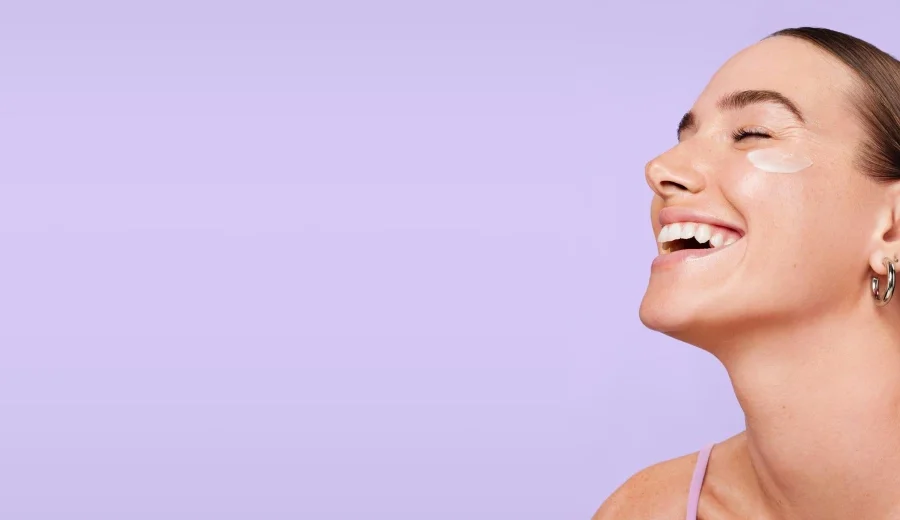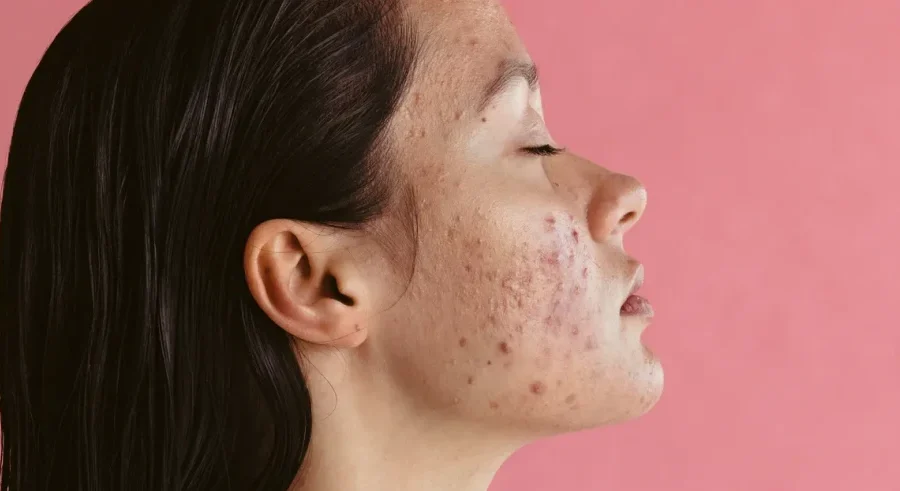Is choosing shampoo a real challenge for You? Does it happen that you think you’ve found a great one, but after a while, you end up disappointed?

Mission (Im)possible: How to Choose Shampoo Without Creating New Problems
How Do You Usually Choose Shampoo?
Maybe you look at labels like “for dry hair,” “for oily hair,” “for split ends,” “for hair growth,” or “against hair loss.” Perhaps you follow beauty bloggers’ recommendations? Or do you read customer reviews and buy the product with the highest rating? Stop, stop, stop — this is not the way to go! The effectiveness of such methods is equivalent to guessing with coffee grounds: if you’re lucky, you’ll guess right; if not, you’ll end up with another batch of scalp and hair problems.
How to Learn to Choose Shampoo for Your Real Need and Stop Random Searches: Debunking Myths and Sharing Effective Tips in This Article.
Shampoo is a Cleanser for the Scalp
We are used to shampoos being divided by hair types: oily, dry, brittle, damaged, with split ends. Remember: shampoo does not solve any hair problems! It doesn’t accelerate growth, doesn’t treat hair loss, doesn’t glue ends, doesn’t reconstruct the structure — in other words, it does absolutely nothing for the hair length. The main (and only) task of shampoo is to gently and effectively cleanse the scalp. That’s it.
Exceptions:
- Medicinal shampoos that affect various types of fungi
- Moisturizing shampoos that can soften the hair length due to a large number of conditioning additives and oils
So, the main thing to focus on when choosing a shampoo is the type and condition of your scalp.
Determining Scalp Type
It’s simple and logical. There are three types of scalp: oily, normal, and dry.
Oily Scalp:
- You have to wash your hair every day
- The root volume lasts only a few hours
- May have oily dandruff
Dry Scalp:
- You wash your hair every 5-7 days
- Discomfort and tightness after washing
- Good root volume retention
Normal Scalp:
- You wash your hair every 2-3 days
- Itchiness, tightness, and dandruff are usually not bothersome
- The root volume lasts for one day.
Remember: any scalp type is okay.
It is futile to try to change it, just like the skin type of your face. The oiliness of the skin depends on the number of sebaceous glands, which are genetically different for everyone, and also on the hormonal background (which can change, for example, during adolescence, pregnancy, or while taking certain medications). All you need to do is accept, understand the characteristics, and find an approach specifically for your scalp type. Be able to choose products that will perfectly match. And as you understand, it’s hard to do this by randomly following bloggers’ advice, friends, or advertising.
P.S.: There is a popular myth that you can “train” your scalp to become less oily by washing it less frequently. If you don't want to ruin your scalp's health, it's better not to do this. Insufficient cleaning disrupts sebum secretion: it becomes thicker and more viscous, poorly distributed along the hair shaft. This may seem like reduced oiliness (but it’s not). The only thing you will get if you don't wash your hair as needed is clogged pores, impaired hair growth, and seborrheic dermatitis as a bonus.
What should you pay attention to?
Having figured out the scalp type and the task of shampoo, now the most interesting part: finding your treasure. As we have already discovered, looking at the label and manufacturer’s promises is useless, and following social media recommendations too, so what’s left? Yes, learning to read the ingredients.
Stop, don’t rush to close the article — it’s much simpler than it seems. In the context of shampoo, we are only interested in two types of components: surfactants (SLS, SLES) and conditioning additives. The rest is “white noise.”
Surfactants — The Main Helpers in Shampoo Composition
Surfactants or surface-active agents are beauty assistants that help your shampoo remove dirt, foam, and easily wash off the skin surface. There are four types: anionic, amphoteric, cationic, and non-ionic.
Anionic Surfactants
Anionic surfactants are the strongest and harshest. They clean thoroughly. On the label, you can recognize them by the ending -ate. These are the “bad” SLS, SLES that everyone fears. But there’s no need to fear. Instead, avoid products where anionic surfactants act solo. If they are combined with other surfactants and softeners — it’s okay to use.
Examples of anionic surfactants:
- Sodium Lauryl Sulfate (SLS)
- Sodium Dodecyl Sulfate
- Ammonium Lauryl Sulfate (ALS)
- Sodium Laureth Sulfate (SLES)
- Ammonium Laureth Sulfate (ALES)
Amphoteric Surfactants
Amphoteric surfactants are softer. They have moderate cleaning ability, produce little foam. They are often the basis of gentle shampoos and cleansers. Shampoos containing only amphoteric surfactants may not clean oily scalp sufficiently.
Examples of amphoteric surfactants:
- Cocamidopropyl Betaine
- Cocamidopropyl Hydroxysultaine
- Disodium Cocoamphodiacetate
- Disodium Lauroamphodiacetate
- Sodium Cocoamphoacetate
Non-ionic Surfactants
Non-ionic surfactants are super gentle. They have endings like -ide, -glucoside, or DEA, MEA. You can find them in shampoos designed for super-sensitive skin or in baby shampoos. Ideally, they are used together with amphoteric and anionic surfactants to balance the product composition.
Examples of non-ionic surfactants:
- Cocamide Diethanolamine (DEA)
- Cocamide Monoethanolamine (MEA)
- Lauramide DEA
- Lauryl Glucoside
- Decyl Glucoside
Cationic Surfactants
Cationic surfactants are not meant for cleaning; they don’t foam well. They are usually used in conditioners because they prevent static, close hair cuticles, and smooth the hair. You can recognize them by the ending -chloride, -bromide.
Examples of cationic surfactants:
- Behentrimonium Chloride
- Benzalkonium Chloride
- Cetrimonium Chloride
remember: the more surfactants in the shampoo, the better
so you will definitely get a complex and non-aggressive cleaning.
Conditioning Additives in Shampoo — For What?
Conditioning additives help balance the composition and soften the action of surfactants. Without them, using shampoo would be quite unpleasant: we’d get dry and tangled hair. However, there’s a nuance: when there are too many conditioning additives in the composition, cleansing can become ineffective (especially for oily scalp types).
Let’s go through four groups of conditioning additives: oils, fatty alcohols, silicones, and polymers.
Oils — probably the most understandable component. It’s best to avoid them at the beginning of the shampoo composition, especially if you have an oily scalp. Examples: Coconut Butter, Cocoa Butter, Butyrospermum Parkii (Shea) Butter.
Fatty Alcohols — great for conditioners, but excessive amounts in shampoo can weigh hair down. Examples: Cetyl alcohol, Stearyl alcohol, Cetearyl alcohol.
Silicones — good for detangling, but they can weigh down hair and reduce volume (which, again, won’t appeal to oily scalp types). Examples: Amodimethicone, Dimethicone, Dimethiconol.
Besides the usual non-soluble silicones, there are also volatile silicones. They are much rarer, but they do not affect cleansing, do not weigh hair down, or reduce volume while detangling well. This is truly a find for oily scalp types. So if you find a shampoo with such silicones in the composition, consider yourself lucky. Examples: Cyclomethicone, Cyclopentasiloxane, Cyclotetrasiloxane.
Cationic Polymers — prevent static and detangle well. The same rule applies here as with other conditioning additives: they are okay when present in small amounts in shampoo. Examples: Polyquaternium, Quaternium, Quaternium-18 Bentonite, Guar Hydroxypropyltrimonium Chloride.
Choosing Shampoo
Summarizing: what to look for and what to avoid in shampoo composition?
For oily scalp types, look for shampoos with more surfactants than conditioning additives. Ideally, there should be a combination of different types of surfactants. Avoid oils and non-soluble silicones.
For dry scalp types, the shampoo base should include amphoteric and non-ionic surfactants and conditioning additives (any kind).
For normal scalp types, a shampoo with an equal amount of different surfactants and conditioning additives will work.



1 Comment